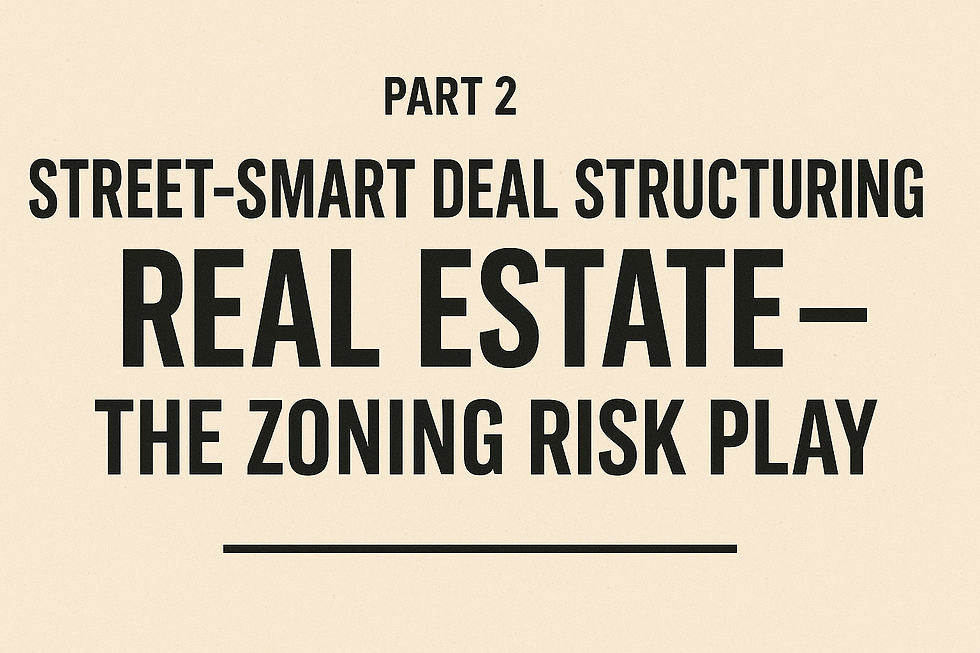Street-Smart Lawyering vs. Textbook Lawyering: What Business Owners Really Need: Part 2 - Real Estate
- Wissam Elgamal
- Jun 7
- 2 min read
In Part 1, we talked about the difference between lawyers who just write contracts and lawyers who understand how deals actually fall apart in the real world.
Now let’s take that thinking into real estate — where one bad assumption or one clause you didn’t enforce fast enough can cost you six figures or more.
This example isn’t about theory. It’s about how a street-smart operator looks at a deal, sizes up the motivations, sees the risk, and then structures an offer that protects their downside while keeping upside in play.

Because sometimes the best negotiation isn’t about the price — it’s about how you buy time, gain control, and learn what everyone else missed.
Let’s get into it.
🏗️ Example: Buying Land for a Mixed-Use Development
You’ve got your eye on a promising piece of land. The listing says it’s “prime for development.” You’re thinking mixed-use: retail on the ground floor, apartments above. The textbook approach would be:
Textbook Lawyer:“Let’s make an offer contingent on zoning approval and financing. 60-day due diligence. We can always walk if something doesn’t work out.”
But the street-smart approach goes deeper. Before even drafting the offer, he asks:
🧠 “What’s this seller’s motivation?”
He pulls public records and sees:
The owner has held the property for 11 years.
It's been listed (on and off) for 2.
There’s no activity around it — no permits pulled, no site work done.
Translation: The guy is probably bleeding holding costs and just wants out. But why hasn’t it sold?
🛑 Then the zoning risk becomes clear:
The area has mixed zoning history. Your intended use might require a variance. That process could take 3–6 months with no guarantee of success. Most buyers don’t want to take that risk — so they walk.
✅ Street-Smart Move: Structure the Deal Creatively
Instead of jumping in with a full-blown offer, your street-smart advisor suggests:
Step 1: Offer a small option payment (say $5,000–$10,000) to tie up the property for 60–90 days while you do deep zoning and neighborhood due diligence.
Step 2: Build in the right to extend the option — for example, by covering his taxes or mortgage costs during the hold.
Step 3: Let him feel like he’s got a serious buyer, but without you locking yourself into a bad bet before doing your homework.
This keeps your downside low, shows respect for his position, and buys you time to earn conviction. And if you find out it’s viable? You already have control.
🎯 Result:
You don’t burn cash or goodwill. You protect yourself from a long, risky escrow. And you build leverage for the final negotiation if the zoning lines up.









Comments